Williston Northampton School
| The Williston Northampton School | |
|---|---|
 | |
| Location | |
| Easthampton, Massachusetts, MA, U.S. | |
| Information | |
| School type | Private |
| Founded | 1841 |
| Headmaster | Mr. Robert Hill[1] |
| Faculty | 114 |
| Grades | 7-PG |
| Enrollment | 539 |
| Average class size | 13 |
| Campus type | Suburban |
| Mascot | Bobcat |
| Newspaper | The Willistonian |
| Website | williston.com |
The Williston Northampton School, or "Williston," is a private co-educational preparatory school for boarding and day students in seventh grade through postgraduate year located in Easthampton, Massachusetts. The 125-acre (0.51 km2) campus offers a range of extra-curricular activities in the arts and athletics. Located in the Pioneer Valley, the school is within 15 miles (24 km) of Amherst, Smith, Mount Holyoke, and Hampshire colleges as well as the University of Massachusetts Amherst.
History
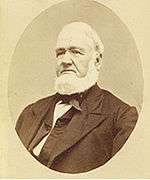
Williston Seminary was founded by Samuel Williston (1795–1874), a wealthy button manufacturer, in February 1841;[2] the school opened that December, with a dedication address by Mark Hopkins, president of nearby Williams College. The idea of opening a new academy in the neighborhood had been in the air ever since the closing in 1834 of the Round Hill School in nearby Northampton.[3] In its early days, there was no arrangement of studies by terms and the students were not classified. Luther Wright, its principal from 1841 to 1849, believed it was desirable to have his pupils study together in a single room under his direction. However, the school's student population grew rapidly and the one-room schoolhouse scheme was soon no longer practicable, as more instructors and new buildings were added. By the 1850s the schools campus was dominated by three large buildings: North Hall, Middle Hall and South Hall. For many years the school was co-educational, with the students divided and taught separately in male and female departments, but in 1864 the female division was discontinued.[4][5]
The Seminary comprised two faculties: classical and scientific. With the departure in 1863 of the school's second president, Josiah Clark, a classicist Greek and Latin scholar who had vigorously fought against the expansion of the English department, the school's curriculum began to be modernized. Samuel Williston remained the dominant influence in the school's growth until his death in 1874. In the late 19th century the dual curricula had evolved into a more modern comprehensive course (e.g. with "scientific and preparatory departments"[6]), and in 1924 the school was renamed Williston Academy. During the 1960s Williston began to examine possibilities for coeducation, and in 1971, merged with its longtime sister school, the Northampton School for Girls, to become the Williston Northampton School. Starting as a preparatory academy for those seeking the clergy, the school now integrates a core college preparatory curriculum with electives and special opportunities, while emphasizing mastery of language, clarity of thought and academic integrity.[7][8]
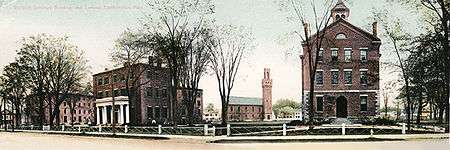
Students and Faculty
Williston Northampton encompasses the middle school (7th and 8th grade) and the upper school (9th-12th).
The school had 535 students in the 2009-2010 academic year, including 78 in the middle school (7th and 8th grade), all of whom are day students. The boarding students come from 25 states and 20 countries around the world. International students come from eastern Asia, the Middle East and Europe. Every year, a dozen or so post-graduate students – students who have graduated from another high school but take an extra year before college – matriculate into the 12th grade.
Williston employs 114 teachers, making for a student-teacher ratio of approximately 4.75:1. The average class consists of 13 students. Most teachers also take on the roles of dorm parents, advisors, and athletics coaches, fostering deep relationships with students.
As of the 2013–14 academic year, the student body currently represents 22 different countries (Bahamas, Bermuda, Brazil, Canada, China, Colombia, Czech Republic, England, Germany, Hong Kong, India, Japan, Kazakhstan, Morocco, Nigeria, Russia, Saudi Arabia, Singapore, South Korea, Taiwan, Thailand, and Vietnam) and 25 different states (Arizona, Arkansas, California, Colorado, Connecticut, Florida, Georgia, Illinois, Kentucky, Maine, Maryland, Massachusetts, Nebraska, New Hampshire, New Jersey, New York, North Carolina, Ohio, Oregon, Pennsylvania, Rhode Island, Texas, Vermont, Virginia, and Washington).
Fast Facts
- 6 students in 10 years published in The Concord Review
- 62% of students taking the 2009 AP exams scored four or five
- 51 members of the class of 2009 gained admission of Barron's 75 most competitive colleges
The Campus
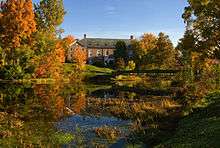
The 125-acre (0.51 km2) campus is located in a quiet area of Easthampton, MA overlooking the crest of Mount Tom. Many of the school's buildings and dorms are situated around the main quad.
The Robert A. Ward Schoolhouse, a former factory building remodeled in the 1950s to resemble the old "schoolhouse" on the original Main Street campus, holds English and math classes and also contains administrative offices.
In 1996, the former gymnasium, originally built in 1924, was transformed into the Reed Campus Center. The Dodge room is the setting for many guest speakers and instrumental and choral concerts.

After a fire destroyed the school’s theater in 1994, it was rebuilt adjacent to the science laboratories, Scott Hall. The Williston Theatre is a 288-seat performance space. Among the improvements is the new theater's flexibility; the seating and stage areas can be moved to create a traditional theater with stage, a thrust-stage, or a theater-in-the-round. The theater also boasts a fly system, high-tech computerized lighting system, upgraded sound system, and an attached scene shop directly behind the stage. Downstairs are the new theater studio (rehearsal space), costume shop, and dressing rooms.

The Robert Clapp Memorial Library is located near the center of the campus. The Clapp Memorial Library has a 40,000+ collection. The librarians select books, online databases, periodicals, videos, DVDs, and music CDs to meet these goals.
The Middle School is housed in the Whitaker-Bement Center, created in 1972 in honor of The Northampton School for Girls founders Sarah B. Whitaker and Dorothy M. Bement, is kept fairly separate from the action of upper school life. However, it does not restrict students from taking part in school activities, such as clubs and after school athletics. The Phillips Stevens Chapel, 1964, hosts both the weekly assembly in its traditional chapel and language classes in its basement.
Life at Williston
The school year begins in September and usually ends in the first week of June. Each student typically takes five classes at a time. Students take 1 year-long English classes and 2 year-long math classes, along with electives. 19 courses may be taken at Advanced Placement (AP) level.
Classes begin at 8:30 a.m. and end in the early afternoon, when many students head off to their athletic practice. For upper school students, there are Saturday classes approximately every other week.
All of the arts programs at Williston are very strong including photography, filmmaking, drawing, painting, theatre, and dance.
Athletics

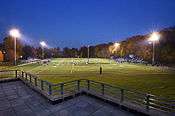
Athletics play an important role in the school, students are required to participate in after-school sports although students may opt for an alternative elective course. Practice includes both strength training and aerobic practices as well as actual play of sports. The facilities support the program's 63 teams played in 30 sports during the course of the school year. Wednesday classes finish at 12:25, early enough for most teams to make it to their afternoon athletic competition. Williston often plays rival schools such as long time cross valley rival Deerfield Academy, or Northfield Mount Hermon, Choate Rosemary Hall, or Suffield Academy. Athletic competitions are also held on weekends.
The school's athletic facilities include a recently redesigned Athletic Center, and a new football field/lacrosse field. Recently, the twelve new tennis courts, soccer fields, discus cage, and track, that have been pending construction, were finished. Facilities include the Athletic Center (below), which houses two basketball courts, a swimming pool, 4 squash courts, a fitness center, and more. The Lossone Arena provides a fully enclosed ice rink for teams and recreational skaters. Both Galbraith Fields and Sawyer Field have undergone major renovations, including converting two fields to synthetic playing surfaces.
Williston Traditions

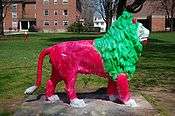
The weekly Williston assembly is the site of many school traditions. Most of the Tuesday gatherings are for general announcements and presentations by both outside speakers and by students, often addressing their peers as part of class assignments. However, there are four special awards assemblies per year: one for each of the three sports seasons and one for academic awards. Another assembly marks the induction of accepted seniors into the Cum Laude Society. Seniors in the top 10% of their class are eligible; this is the highest academic honor the school confers.
At the last assembly of the year, the graduating seniors (seated at the front of the chapel) traditionally leave first, the juniors fill their places, and so on as each class files downward, signifying their move to a new grade.
Also familiar to many graduates of a particular era is the annual “Do Good Well” speech, given each year at an assembly by the recipient of the Robert A. Ward Medal. The quote was a particular favorite of Robert Frost, handed down from Headmaster Robert Ward by way of the story of a small child asking Frost if one should “do good” or “do well”, to which Frost replied that one should "do good well." The Ward Medal is given by The Alumni Council to a member of the Williston Northampton community who has made significant contributions to their communities through volunteerism and humanitarian service.
Male Varsity and Junior Varsity athletes will go beyond the normal dress code on game days and wear a tie and jacket at the discretion of the team's captains or head coach. Female Varsity athletes will periodically wear obviously and outrageously clashing outfits on game days. Game day dress in winter has been known to involve summer dresses with sunglasses and totes. Female game day dress is typically enforced by team captains and not team coaches in contrast to male game day dress enforcement.
By far one of the most ubiquitous and enduring traditions at the Williston Northampton School is the painting of the school lion. At least several times a year, boarding students sneak out of their dorms (breaking the strict curfew regulations) or day students sneak back to campus late at night and spray paint the statue of a lion on the center of campus. These art projects sometimes have a theme, such as the patriotic colors the lion displayed for the entire fall semester following the events of September 11, 2001, but more often, probably due to time constraints imposed by the necessity of remaining unseen, they are simply random colors. Occasionally the lion is painted in response to disciplinary action by the school's disciplinary committee, especially expulsions.
Still another tradition at the school is ringing the victory bell after winning an athletic event. Usually the whole team will run up from the field and ring the bell multiple times if it was a good game. The whole campus can hear the bell from where it is stationed between Reed Hall and the dining hall.
School song
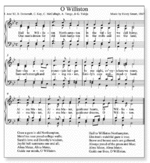
There are a few school songs at Williston. One commonly known among students and alumni is "Sammy," in reference to founder and first headmaster Samuel Williston. While the song is sung on many occasions, singing "Sammy" at midfield has become a tradition for the varsity football team after home victories.
The words are as follows:
Sammy, my Sammy, My heart yearns for thee,
Yearns for your campus and your old elm tree,
Long may we cherish in years yet to come,
Long may we cherish Williston.
The "Williston Hymn" was a standby at the beginning and end of year assemblies, as well as at the Cum Laude assembly, for many decades (although apparently discontinued some time in the 2000s). The text was as follows:
God preserve our alma mater/
Williston forevermore/
In the sunshine of thy favor/
Guard her, keep her, we implore/
Crown her still with strength and honor/
By thy grace renew her youth/
In the light that never faileth/
Lead her on from truth to truth/
Here today upon her altars/
We present our sacrifice/
Though tomorrow widely sundered/
Still may this our prayer arise/
God preserve our alma mater/
Williston forevermore/
In the sunshine of thy favor/
Guard her, keep her, we implore/
Amen.
The tune of the Williston hymn, through unfortunate coincidence, was the German national anthem, "Deutschlandlied." Long before Germany adopted it, the melody was composed by Joseph Haydn, for use as the Austrian national anthem. In 1797 Haydn incorporated it into his "Emperor" string quartet, op. 76, no. 3.
O Williston, the school’s new alma mater, made its debut at Convocation on September 14, 2007 and is performed at the school’s more formal occasions, such as Convocation and Baccalaureate.
Notable Alumni and Faculty
- Richard Alpert (1948), later known as guru Ram Dass
- Shawn Amos, American songwriter, singer, record producer, web personality and content creator, and pop culture commentator
- Hiram Bingham II, Missionary in Hawaii
- William Smith Clark (1844), president of Hokkaido University, Japan, and University of Massachusetts, Amherst
- Charles Robert Connell, Pennsylvania congressman
- Edward G. Coy (1865), first headmaster of the Hotchkiss School
- Winthrop Crane, 40th Governor of Massachusetts, U.S. Senator, owner of the Crane Paper Company
- Henry Wheeler de Forest, chairman of the board of Southern Pacific Railroad
- Austin Dickinson, treasurer of Amherst College and older brother of Emily Dickinson
- Cleveland Hoadley Dodge, financier and philanthropist
- Ann Dowd, Actress
- William C. Dudley, President of the Federal Reserve Bank of New York
- P. D. Eastman, screenwriter
- Charles H. Eglee, (1970) Emmy-winning screenwriter and producer
- Mitch Epstein (1970) photographer, cinematographer, and production designer
- Charles Evans, Jr. (1980), film producer and documentary film director
- Victor H. Fazio, U.S. House of Representatives (CA 4th district '79-'93, 3rd district '93-'99)
- George L. Frost, Wisconsin politician
- Ashley Gearing (2009), American Country Singer
- William J. Granfield, Massachusetts congressman
- Michael Goldbloom, Toronto Star publisher
- Richard C. Gregory, (faculty, 1961-2004) a cappella composer, educator
- Brad Hall (1975), Actor, Producer, Writer. Saturday Night Live Weekend Update Anchor
- G. Stanley Hall (1863), Psychologist, father of American Psychology
- Ross Holden, Notable Biologist known for his work in Flow Cytometry.
- Kaitlin Hopkins, Actress
- Horatio Knight, Massachusetts Lt. Governor
- Tony Lavelli (1945), 1st Overall NBA Draft Pick & famous accordion player
- Selah Merrill, was an American Congregationalist clergyman, an educator, and American diplomat
- Antonio Moreno, actor—at least according to Moreno's possibly spurious memoir. Williston has no record that he actually enrolled.
- Barry Moser, (faculty, 1967–1982) printmaker & illustrator
- Shannon O'Brien (1977), Massachusetts State Treasurer, Gubernatorial Candidate
- Charles Henry Parkhurst, minister who challenged Tammany Hall
- DJ Steve Porter, Has made multiple appearances on ESPN
- Edward Clark Potter, sculptor
- Moses Taylor Pyne (1873), financier and philanthropist
- Lawson P. Ramage, Vice Admiral USN, WWII submarine commander
- Patrick Rissmiller, Professional Hockey Player, NHL New York Rangers, Forward
- Elihu Root (1863), statesman and Nobel Peace Prize winner
- Luther Ely Smith, (1890), founder of Jefferson National Expansion Memorial
- Butch Spagna, Professional Football Player
- Amos Alonzo Stagg, (Coach, 1890–1891), Hall of Fame Football Coach, Williston Seminary
- William Stanley, Jr., American physicist and father of Harold Morgan, cofounder of Morgan Stanley
- Henry Stockbridge, Jr., Maryland congressman
- George Crockett Strong (1851), U.S. Civil War General
- Robert Samuelson (1963), Economic columnist and journalist, editor for Newsweek and the Washington Post, and author
- Lucy Thurber, playwright
- Henry Clay Trumbull (1841) American clergyman and author, pioneered the Sunday School Movement
- William C. Whitney (1859), financier, Secretary of the Navy (1885–1889)
- Boon Tuan Boon-Itt, an early leader in the Protestant Christian community of Thailand
- Bryan Callen, stand up comedian, host of The Fighter and the Kid podcast.
Notes
- ↑ http://www.masslive.com/news/index.ssf/2010/05/post_105.html
- ↑ George Adams (1853). "Education in Massachusetts: Incorporated Academies". Massachusetts Register. Boston: Printed by Damrell and Moore.
- ↑ "A Group of Classical Schools (II)", Harper's New Monthly Magazine, Oct. 1877, p. 706.
- ↑ Genealogical and personal memoirs relating to the families of the state of Massachesetts, William Richard Cutter, Lewis historical publishing company, 1910
- ↑ The life story of Henry Clay Trumbull, Philip Eugene Howard, International Committee of Young Men's Christian Association, 1906
- ↑ "Williston Seminary". The Independent. Jul 6, 1914. Retrieved August 1, 2012.
- ↑ http://www.masslive.com/news/index.ssf/2010/05/post_105.html
- ↑ http://www.williston.com/Page.aspx?pid=282
http://pitchperfect-thebook.blogspot.com/2008/10/who-is-dick-gregory.html
External links
Coordinates: 42°16′00.33″N 72°40′18.41″W / 42.2667583°N 72.6717806°W